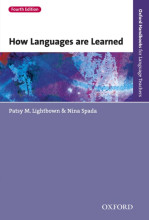Summary: Linguistics
- This + 400k other summaries
- A unique study and practice tool
- Never study anything twice again
- Get the grades you hope for
- 100% sure, 100% understanding
Read the summary and the most important questions on linguistics
-
1 linguistics
This is a preview. There are 58 more flashcards available for chapter 1
Show more cards here -
People have long used donkeys as pack animals.The speaker pronounces the underlined word in which of the following ways?a. [donkɘz] b. [daŋkeys] c. [dawŋkys] d. [daŋkiz]
d. [daŋkiz] -
What is a phoneme?
- Phonemes=sounds that are perceived as meaningfully different in a language (‘distinctive’).
- Each sound has its own phonetic symbol in the International Phonetic Alphabet (IPA).
- Phonetic symbols – not the same as spelling! 1 sound = 1 symbol.
- Phonemes=sounds that are perceived as meaningfully different in a language (‘distinctive’).
-
How many distinct sounds are in these words?bebeatkneecoughedsubstitution
- be (2)
- beat (3)
- knee (2)
- coughed (4)
- substitution (11)
- be (2)
-
How many distinctive consonants in American English?
There are 24 distinctive consonants in American English, each one represented by a phonetic symbol. -
Manner of ArticulationHow is the air obstructed? There are three main ways. What are they?
- Stops: p, b, t, d, k, g
- Fricatives: f, v, th, s, z, sh
- Affricates: ch, j
- Stops: p, b, t, d, k, g
-
4 ways we describe vowels in American English:
- How high is my tongue? (high, mid, low)
- How far forward is my tongue? (front, mid, back)
- Are the sounds tense or lax?
- Are my lips rounded or unrounded?
- How high is my tongue? (high, mid, low)
-
All the berries were picked.Which of the following best characterizes the speaker’s pronunciation of the very last sound in the word “picked”?a. [ed] b. [t] c. [d] d. [ɾ]
b. [t] -
K ACHRU’S “CIRCLES” of “World Englishes”
Many varieties of English are found across the globe. Kachru (1992) classified these varieties as those used in the ‘inner circle’, the ‘outer circle’, and the ‘expanding circle’. -
"The wind blew down many tree branches”The speaker pronounced the underlined word in which of the following ways?1. [brančez] 2. [brɛnčɛz] 3. [brayncɛz] 4. [brænčəz]
4. [brænčəz] -
the rule for when a vowel is nasalized in English
- Vowels in English become nasalized before nasal consonants.
- The sound environments ‘condition’ the phonemes so that each allophone is pronounced more easily within its environment
- Vowels in English become nasalized before nasal consonants.
- Higher grades + faster learning
- Never study anything twice
- 100% sure, 100% understanding































